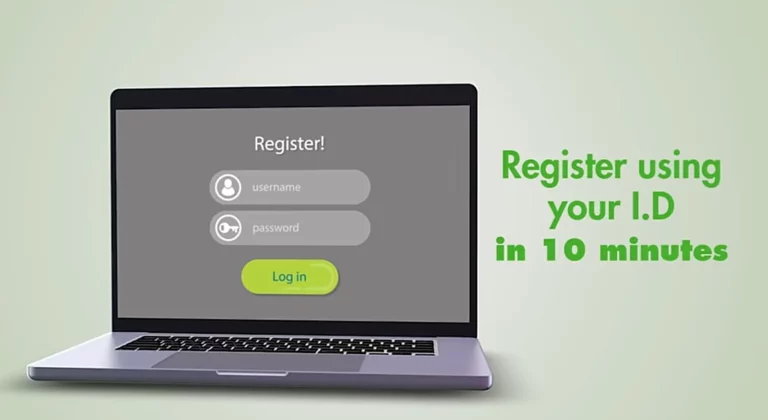Let’s face it: getting funding for your business can be a real pain in the ass.
Traditional banks often treat you like a number, not a person with dreams and ambitions.
They want perfect credit scores, years of profitable history, and your firstborn child as collateral.
But what if I told you there’s another way?
A way that cuts out the middleman, connects you directly with people who want to invest in your success, and can get you funded faster than you can say “approved”?
Welcome to the world of using peer-to-peer lending platforms for your business.
In this post, I’m going to break down everything you need to know about this game-changing approach to business financing.
We’ll dive into the good, the bad, and the ugly of P2P lending, so you can decide if it’s the right move for your company.
By the time we’re done, you’ll have a clear roadmap for navigating this exciting but complex landscape.
What Are Peer-to-Peer Lending Platforms?
Before we dive into the nitty-gritty, let’s get clear on what we’re talking about.
Peer-to-peer (P2P) lending platforms are online marketplaces that connect borrowers directly with individual lenders.
Think of it as the Tinder of the financial world, but instead of swiping for dates, you’re matching with people who want to fund your business dreams.
Here’s how it differs from traditional lending:
- No banks involved: You’re cutting out the middleman and dealing directly with investors.
- Faster process: Approvals can happen in days, not weeks or months.
- More flexible terms: Lenders compete for your business, often leading to better rates and conditions.
- Lower overhead: Without fancy bank buildings and armies of loan officers, costs are often lower.
P2P lending isn’t some new kid on the block.
It’s been around since 2005 when Zopa launched in the UK.
Since then, it’s exploded into a global industry worth billions.
The global P2P lending market is expected to reach $517.2 billion in 2024.
And it’s not slowing down.
Projections show it could reach a staggering$1,709.6 billion by 2034.
That’s some serious cash flowing through these platforms.
But here’s the kicker: despite this massive growth, many businesses still haven’t tapped into this goldmine of opportunity.
They’re stuck in the old ways, begging banks for scraps when there’s a feast waiting for them online.
Don’t be one of those businesses.
The Advantages of P2P Lending for Businesses
Now that we’ve got the basics down, let’s talk about why you might want to jump on the P2P bandwagon.
Trust me, there are some juicy benefits here that could make a real difference to your bottom line.
✅ Lower Interest Rates
First up, let’s talk money.
Because that’s what it’s all about, right?
P2P platforms often offer lower interest rates than traditional banks.
Why? Simple economics.
They have lower overhead costs, and they pass those savings on to you.
Plus, lenders compete for your business, driving rates down even further.
I’ve seen businesses save thousands in interest payments by switching to P2P loans.
That’s money you can reinvest in your business, not hand over to some faceless bank.
✅ Faster Approval Process
Time is money, especially in business.
With P2P lending, you can often get approved and funded in a matter of days.
No more waiting weeks for a bank to get back to you.
No more chasing down paperwork or sitting through endless meetings.
Just quick, efficient funding when you need it most.
I once helped a client get a $50,000 loan approved in 48 hours through a P2P platform.
Try getting that kind of speed from a traditional bank.
✅ Flexible Loan Terms
One size doesn’t fit all in business, and P2P platforms get that.
They offer a range of loan terms that can be tailored to your specific needs:
- Loan amounts: From a few thousand to millions of dollars
- Repayment periods: Short-term loans of a few months to long-term options of 5 years or more
- Interest structures: Fixed or variable rates, depending on your preference
This flexibility means you can structure your loan to match your cash flow and business goals.
It’s like getting a custom-tailored suit instead of buying off the rack.
✅ Access for Businesses with Limited Credit History
Here’s where P2P lending really shines.
If you’re a new business or don’t have a stellar credit history, you’re not automatically out of the game.
Many P2P platforms look beyond just credit scores.
They consider factors like:
- Your business plan
- Revenue projections
- Social media presence
- Personal background and experience
This holistic approach means you have a fighting chance, even if traditional banks have shut their doors on you.
I’ve seen startups with no credit history secure six-figure loans through P2P platforms.
It’s not a guarantee, but it’s a hell of a lot better than an automatic “no” from a bank.
Potential Drawbacks and Risks
Alright, I’ve sung the praises of P2P lending, but let’s get real for a second.
It’s not all sunshine and rainbows.
There are some potential pitfalls you need to be aware of before you dive in headfirst.
Knowledge is power, and I want you armed to the teeth.
❌ Higher Fees and Penalties
While interest rates can be lower, P2P platforms often come with their own set of fees that can add up quickly.
We’re talking about:
- Origination fees
- Late payment fees
- Prepayment penalties
Some platforms are sneakier than others about these costs.
I’ve seen businesses get blindsided by fees that ate into their profits.
Always, and I mean always, read the fine print.
Know exactly what you’re signing up for before you commit.
❌ Lack of Regulation
Here’s a big one: the P2P lending industry isn’t as heavily regulated as traditional banking.
This can be a double-edged sword.
On one hand, it allows for more innovation and flexibility.
On the other, it means you have fewer protections as a borrower.
The rules can change quickly, and you need to stay on your toes.
I’ve had clients get caught out when platforms suddenly changed their terms or even shut down operations.
It’s not common, but it happens.
Stay informed and have a backup plan.
❌ Potential for Default
Remember, P2P lending connects you directly with individual lenders.
If those lenders run into financial trouble, there’s a risk they might not be able to fully fund your loan.
This is rare on established platforms, but it’s not unheard of.
I always advise my clients to have a contingency plan.
Don’t put all your eggs in one P2P basket.
❌ Impact on Credit Score
Here’s something many businesses overlook: P2P loans can affect your credit score just like any other loan.
Miss payments, and your score will take a hit.
But here’s the kicker: some P2P platforms report to credit bureaus more aggressively than traditional lenders.
I’ve seen businesses damage their credit scores without realizing it, making future borrowing more difficult and expensive.
Be vigilant about your payments and monitor your credit regularly.
How to Choose the Right P2P Platform for Your Business
Now that you’re aware of both the upsides and potential pitfalls, let’s talk about how to pick the right platform for your needs.
This decision can make or break your P2P lending experience, so pay attention.
Factors to Consider
When evaluating P2P platforms, keep these key factors in mind:
- Reputation and track record: How long has the platform been around? What do other businesses say about them?
- Loan terms and rates: Are they competitive? Do they fit your business needs?
- Fees and charges: Look beyond just the interest rate. What other costs are involved?
- Funding speed: How quickly can you get the money once approved?
- Eligibility requirements: Can your business qualify? What documentation is needed?
- Customer support: Is help available when you need it?
- Security measures: How does the platform protect your data and transactions?
Top Platforms in the Market
While I can’t endorse specific platforms, here are some of the bigger players you might want to research:
Each has its own strengths and weaknesses, so do your homework.
Comparison of Features and Benefits
Here’s a quick comparison table to give you an idea of what to look for:
| Feature | Platform A | Platform B | Platform C |
|---|---|---|---|
| Interest Rates | 5-25% | 6-36% | 7-30% |
| Loan Amounts | $5k-$500k | $2k-$50k | $1k-$100k |
| Term Length | 6 mo – 5 yrs | 3 mo – 3 yrs | 1 yr – 7 yrs |
| Funding Speed | 2-5 days | 1-3 days | 3-7 days |
| Min. Credit Score | 620 | 580 | 600 |
Remember, these are just examples.
Always check the latest information directly from the platforms.
Maximizing Your Success with P2P Lending
You’ve chosen your platform, what’s next?
Now let’s talk about how to crush it in the P2P lending game.
Preparing Your Application
First impressions matter.
Here’s how to make yours count:
- Polish your business plan: Make it sharp, concise, and compelling.
- Get your financials in order: Clean books show you’re serious and responsible.
- Improve your credit score: Even a small boost can make a big difference.
- Gather all necessary documents: Be thorough and organized.
- Craft a killer pitch: Explain why your business is a great investment opportunity.
Pro tip: Tell a story with your application.
Numbers are important, but humans invest in stories and potential.
Make them believe in your vision.
Managing Your Loan Effectively
Once you’ve got the money, use it wisely:
- Stick to your business plan: Use the funds for what you said you would.
- Set up automatic payments: Never miss a due date.
- Monitor your cash flow closely: Ensure you can always meet your obligations.
- Communicate proactively: If issues arise, talk to your lenders early.
Remember, your reputation on the platform can affect future borrowing opportunities.
Build a positive track record, and you’ll unlock better terms down the line.
Building a Positive Lending History
Think long-term.
Here’s how to build a stellar P2P lending history:
- Always pay on time: This is non-negotiable.
- Borrow responsibly: Don’t take on more than you can handle.
- Update your profile regularly: Show your business growth and successes.
- Engage with the platform community: Some platforms have forums or networking opportunities.
- Consider becoming a lender yourself: It can give you valuable insights and diversify your income.
If you follow these strategies, you’re not just getting a loan.
You’re building a valuable financial asset for your business.
Common Challenges and How to Overcome Them
Even with the best preparation, you might hit some bumps in the road.
Let’s tackle some common challenges head-on.
Rejection Strategies
Got turned down? Don’t panic. Here’s what to do:
- Ask for feedback: Many platforms will tell you why you were rejected.
- Address the issues: Fix what you can based on their feedback.
- Try a different platform: Each has its own criteria.
- Consider a smaller loan: Start small and build trust.
- Look for a co-signer or guarantor: This can boost your application strength.
Remember, rejection isn’t the end.
It’s feedback.
Use it to come back stronger.
Dealing with Late Payments
Life happens. If you’re struggling to make payments:
- Communicate early: Don’t wait until you’ve missed a payment.
- Propose a solution: Many platforms offer hardship programs or restructuring options.
- Cut costs elsewhere: Show you’re making efforts to meet your obligations.
- Consider refinancing: If interest rates have dropped, this could lower your payments.
- Seek additional revenue streams: Can you boost your income to cover the shortfall?
The key is to be proactive.
Ghosting your lenders is the worst thing you can do.
Navigating Platform Changes
P2P platforms evolve. Here’s how to roll with the punches:
- Stay informed: Read all communications from the platform.
- Understand how changes affect you: Ask questions if anything is unclear.
- Have a backup plan: Don’t rely solely on one platform.
- Network with other borrowers: Join forums or groups to share experiences and strategies.
- Be prepared to switch: If a platform no longer meets your needs, be ready to move.
Adaptability is key in the fast-moving world of P2P lending.
Stay flexible, and you’ll thrive.
Final Thoughts
We’ve covered a lot of ground, so let’s bring it all home.
Using peer-to-peer lending platforms for your business can be a game-changer.
It offers speed, flexibility, and opportunities that traditional banks can’t match.
But it’s not without risks.
You need to go in with your eyes wide open, armed with knowledge and a solid strategy.
Remember:
- Choose your platform wisely
- Prepare thoroughly
- Manage your loan responsibly
- Build a positive lending history
- Be ready to tackle challenges head-on
The future of P2P lending looks bright.
As technology advances and more businesses discover its benefits, we’re likely to see even more innovation in this space.
But the fundamentals will remain the same: it’s about connecting businesses that need capital with people willing to invest in them.
So, is P2P lending right for your business?
Only you can answer that.
But if you’re tired of jumping through hoops for traditional loans, if you’re looking for more flexibility and speed in your financing, and if you’re ready to take control of your business’s financial future, then using peer-to-peer lending platforms for your business might just be the solution you’ve been searching for.
Take the plunge.
Do your research.
And who knows?
This could be the financial boost that takes your business to the next level.
FAQ Section
How much can I borrow through P2P lending platforms?
Loan amounts vary widely between platforms, ranging from a few thousand dollars to several million. It depends on factors like your business’s revenue, credit score, and the specific platform’s limits.
Are P2P loans secured or unsecured?
Both types are available. Secured loans require collateral and often have lower interest rates. Unsecured loans don’t require collateral but may have higher rates and stricter eligibility criteria.
How long does the application process take?
It varies, but many P2P platforms can process applications within a few days to a week. This is typically much faster than traditional bank loans.
Will applying for a P2P loan affect my credit score?
Most platforms perform a soft credit check during the initial application, which doesn’t affect your score. However, if you proceed with the loan, a hard credit check is usually required, which can temporarily lower your score by a few points.
What happens if I can’t repay my P2P loan?
The consequences are similar to defaulting on any loan. Your credit score will be negatively impacted, you may face collection efforts, and legal action could be taken against you. Always communicate with the platform if you’re having difficulties making payments.
Can I pay off my P2P loan early?
Usually, yes. However, some platforms charge prepayment penalties. Check the terms of your specific loan before making early repayments.
Are P2P loans regulated?
The level of regulation varies by country. In the US, for example, P2P lending is overseen by the Securities and Exchange Commission (SEC) and state regulators. However, regulations are generally less stringent than for traditional banks.
Can I get a P2P loan if I have bad credit?
It’s possible, but more challenging. Some platforms specialize in loans for businesses with less-than-perfect credit. However, expect higher interest rates and possibly stricter terms.
How do P2P lending platforms make money?
They typically charge fees to both borrowers and lenders. These can include origination fees, servicing fees, and late payment fees.
Is my personal information safe on P2P platforms?
Reputable platforms use bank-level encryption and security measures to protect your data. However, as with any online financial transaction, there’s always some level of risk. Research a platform’s security practices before using it.
Can I use P2P lending for any type of business expense?
Generally, yes. P2P loans can be used for various business purposes, from equipment purchases to working capital. However, some platforms may have restrictions on how funds can be used.
How do interest rates on P2P loans compare to traditional bank loans?
It varies widely. For businesses with good credit, P2P rates can be lower than bank rates. For higher-risk borrowers, P2P rates might be higher but still more accessible than bank loans.
Can I negotiate the terms of a P2P loan?
A: Unlike traditional bank loans, most P2P platforms don’t allow for direct negotiation. However, you can often adjust your loan amount or term length to get more favorable rates.
Read also:




